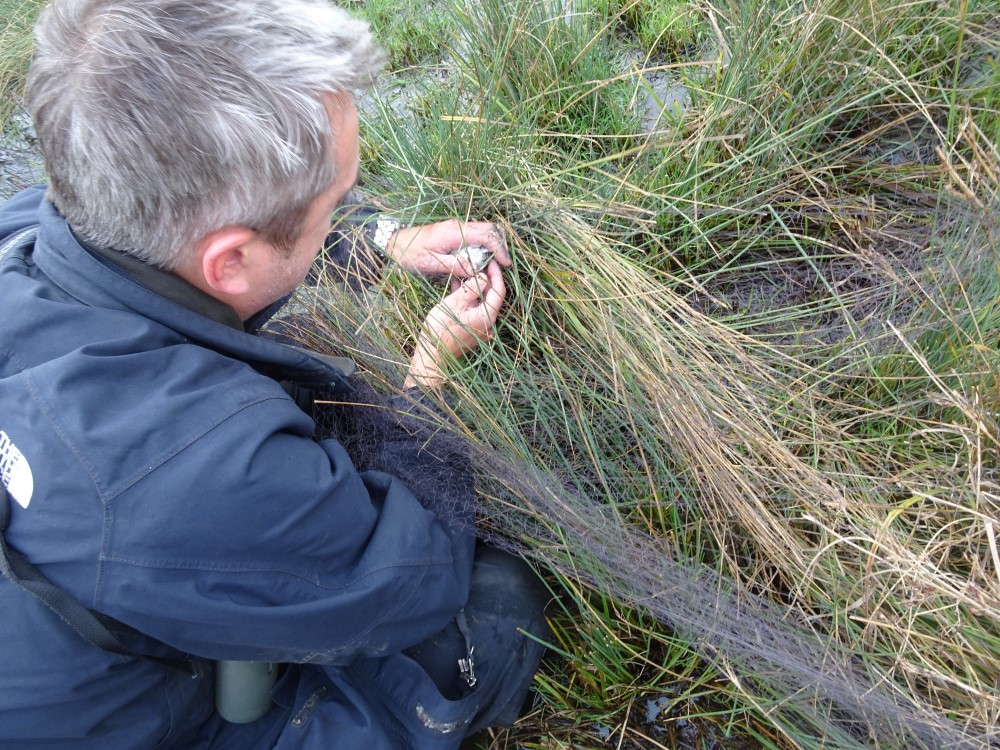Recent activities

Ringing is sometimes a drag!
Drag netting can be hard work, but it's the best way to catch one of our most enigmatic waders, writes Roger Emmens.
Normally when we go netting, we are very careful to treat our mist-nets kindly and try to avoid snagging and tearing them. So it is quite hard to bring yourself to dragging one, even an old and tatty one, across the meadow.
Jack Snipe feed right out in the meadow in the boggy margins amongst the sedge. They sit tight as you approach, and break cover at the last minute, from right under your feet. It is this habit that enables us to catch them, because they take flight after the leading edge of the net has passed over them. Those walking behind the net then swoop to pick them from the folds of the net.

It is amazing how tight they sit - we lost one when it didn't take flight until after the whole net had passed over it - but their trust in their camouflage is well-based: we never spot them until they fly, despite this only being a few feet in front of us.
It is hard work because of the terrain: very soft ground, covered with anything from a centimetre or two to more than wellie depth, and nearly impossible to tell how deep the next step will take you. After an hour marching up and down the meadow at Rye Meads we were all more than ready to stop!

But our labours were well rewarded. Four new Jack Snipe collected and ringed, bringing our total for this year to date to twelve. To put that into perspective, just over 300 are ringed in the UK as a whole each year. Even better, we caught a retrap: a bird ringed in February this year and aged then as an adult, i.e. a bird hatched no later than 2016.
Jack Snipe breed mainly in Scandinavia and across northern Russia, so the birds that winter here have most likely come from northern Europe or north-west Russia - there are too few recoveries of ringed birds to be sure. It is therefore really interesting to note that one such bird has found Rye Meads sufficiently useful for winter feeding to come back here for successive winters.
We were also able to treat some visiting RSPB members (and some of the staff and volunteers!) with a chance to see these stunning little birds close up!


Try stopping and walk over the net when dragging to flush all birds, then move forward another net width. Takes longer but higher catch rate…26 winters and still going. Iain Livingstone Clyde RG
Thanks Iain, we’ll give that a try. May need to pick your brains about how you find it ageing them – we often struggle.